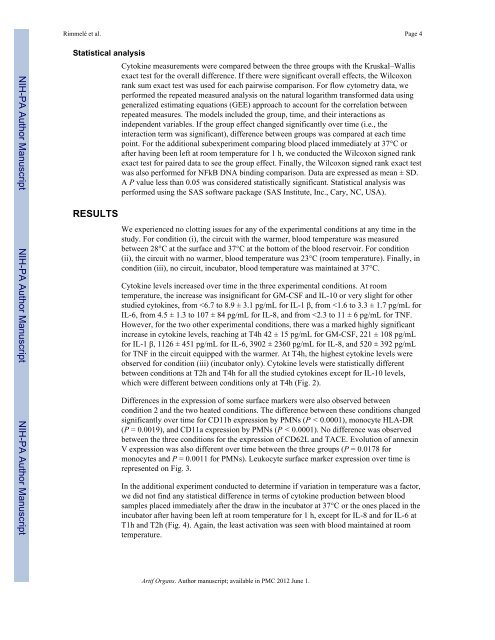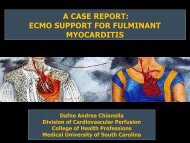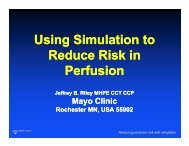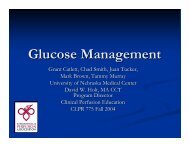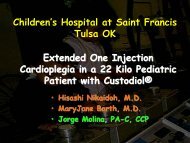Read the Full Text (PDF) - Perfusion.com
Read the Full Text (PDF) - Perfusion.com
Read the Full Text (PDF) - Perfusion.com
You also want an ePaper? Increase the reach of your titles
YUMPU automatically turns print PDFs into web optimized ePapers that Google loves.
Rimmelé et al. Page 4<br />
NIH-PA Author Manuscript NIH-PA Author Manuscript NIH-PA Author Manuscript<br />
Statistical analysis<br />
RESULTS<br />
Cytokine measurements were <strong>com</strong>pared between <strong>the</strong> three groups with <strong>the</strong> Kruskal–Wallis<br />
exact test for <strong>the</strong> overall difference. If <strong>the</strong>re were significant overall effects, <strong>the</strong> Wilcoxon<br />
rank sum exact test was used for each pairwise <strong>com</strong>parison. For flow cytometry data, we<br />
performed <strong>the</strong> repeated measured analysis on <strong>the</strong> natural logarithm transformed data using<br />
generalized estimating equations (GEE) approach to account for <strong>the</strong> correlation between<br />
repeated measures. The models included <strong>the</strong> group, time, and <strong>the</strong>ir interactions as<br />
independent variables. If <strong>the</strong> group effect changed significantly over time (i.e., <strong>the</strong><br />
interaction term was significant), difference between groups was <strong>com</strong>pared at each time<br />
point. For <strong>the</strong> additional subexperiment <strong>com</strong>paring blood placed immediately at 37°C or<br />
after having been left at room temperature for 1 h, we conducted <strong>the</strong> Wilcoxon signed rank<br />
exact test for paired data to see <strong>the</strong> group effect. Finally, <strong>the</strong> Wilcoxon signed rank exact test<br />
was also performed for NFkB DNA binding <strong>com</strong>parison. Data are expressed as mean ± SD.<br />
A P value less than 0.05 was considered statistically significant. Statistical analysis was<br />
performed using <strong>the</strong> SAS software package (SAS Institute, Inc., Cary, NC, USA).<br />
We experienced no clotting issues for any of <strong>the</strong> experimental conditions at any time in <strong>the</strong><br />
study. For condition (i), <strong>the</strong> circuit with <strong>the</strong> warmer, blood temperature was measured<br />
between 28°C at <strong>the</strong> surface and 37°C at <strong>the</strong> bottom of <strong>the</strong> blood reservoir. For condition<br />
(ii), <strong>the</strong> circuit with no warmer, blood temperature was 23°C (room temperature). Finally, in<br />
condition (iii), no circuit, incubator, blood temperature was maintained at 37°C.<br />
Cytokine levels increased over time in <strong>the</strong> three experimental conditions. At room<br />
temperature, <strong>the</strong> increase was insignificant for GM-CSF and IL-10 or very slight for o<strong>the</strong>r<br />
studied cytokines, from


